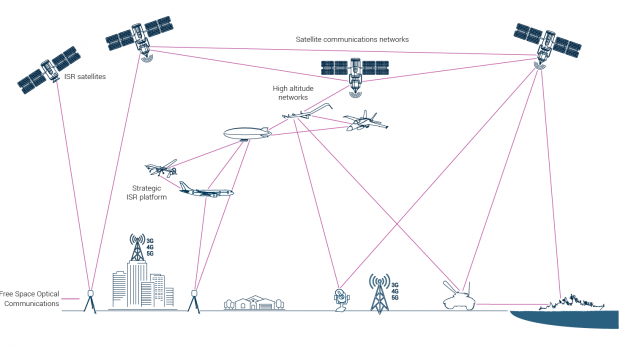QinetiQ’s Free Space Optical Communications technology could shift the balance of power
As the market for low-cost and expendable unmanned aerial systems (UAS) platforms continues to grow, so too has the market for counter-UAS (C-UAS) technologies capable of defeating this emerging threat. QinetiQ’s first practical demonstration of its two-way Free Space Optical Communications (FSOC) technology, designed to enhance the survivability of UAS, could shift the balance of power in favor of UAS platforms once again, says GlobalData, a data and analytics company. Most commercial and military C-UAS solutions rely on electromagnetic (EM) interference to detect and disrupt a UAS platform’s communications with its operator station.
Tristan Sauer, Land Domain Analyst at GlobalData, comments: “In the case of small, low-cost UAS platforms such as the commercial quadcopters employed in conflicts in Ukraine and Syria, EM-based C-UAS solutions remain particularly effective as those platforms typically possess limited EM hardening capabilities to maintain affordability. As such, EM-based C-UAS systems are readily capable of detecting and disrupting radio-frequency (RF)-based communications.”
QinetiQ’s FSOC technology employs a laser to communicate data at extremely high bandwidths, reducing platform-operator input lag whilst further securing data transmissions from detection, interception or interference. Not only does FSOC’s data transmission vector render RF-based C-UAS solutions ineffective, it also makes them more secure from a range of additional electronic warfare threats.
Sauer continues: “QinetiQ has already identified the transformative potential this FSOC could have in securing communications and data transmission beyond the UAS/C-UAS market, as the technology is modular and could therefore be integrated with a range of other air, land sea and space-based platforms. However, as this technology has yet to be employed in an actual combat scenario, questions have been raised as to how effective FSOC communications will be when faced with atmospheric interference.”
As stable FSOC communication relies on optical lasers, the system must maintain direct line-of-sight for optimal effectiveness. The capability demonstration relied on a static control module, which may not always be a viable solution on highly dynamic battlefields. It could be possible for multiple UAS platforms to inter-network using FSOC in order to extend the range at which data transmission can remain secure, however this would significantly drive up the cost of UAS platforms, which would essentially defeat their purpose as affordably expendable platforms.
Sauer adds: “Despite these challenges, the FSOC technology provides optimal value in the UAS/C-UAS market as a complementary survivability solution rather than an outright alternative to RF data transmission. Integrating both technologies would allow them to complement each other based on evolving circumstances, thus providing radically enhanced communications and data transmission capabilities for unmanned systems on the future battlefield.”

For Editorial Inquiries Contact:
Editor Kym Bergmann at kym.bergmann@venturamedia.net
For Advertising Inquiries Contact:
Director of Sales Graham Joss at graham.joss@venturamedia.net









Gloss